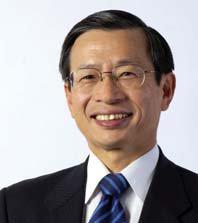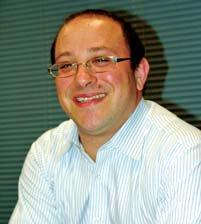Changing the Status Quo
The future of stock exchange technology in Japan

By Brad Frischkorn
Almost since its inception in 1878, the Tokyo Stock Exchange (TSE) has been synonymous with trading in the Japanese financial markets. Other regional bourses do exist to serve investors, but after careful merging and consolidation over the decades, the TSE remains the unquestioned benchmark.
Financial markets are perpetually changing, and the last 25 years have seen a dramatic modernization at Japan’s signature bourse. These include the start of financial futures trading (1985), as well as free cross-border capital transactions (1998), which have helped unlock huge business potential. Daily trading volumes, which averaged well under 1 million shares in 2000, routinely hit 6-7 million today. All told, Japan’s securities exchanges rank as the second-largest stock market in the world. The TSE is set to list itself some time in 2009.
The spread of electronic trading is largely behind the dramatic rise in volumes seen in all of the world’s major bourses over the last several years – including Japan, where the TSE first introduced computerization in 1999.
 Tomoyoshi Uranishi: Senior Executive, Tokyo Stock Exchange
Tomoyoshi Uranishi: Senior Executive, Tokyo Stock Exchange
The greatest shifts in the trading landscape are still unfolding, however, as the endless hunt for liquidity, convenience, and efficiency have seen the rise of Proprietary Trading Systems (PTSs), a handful of which now operate here. Algorithmic (or ‘algo’) trading, which is based on sophisticated software that slices up large orders to minimize market impact, has also been in use in Japan since 2004–05. And cross-network trading, including dark liquidity pools (‘dark pools’) has been increasing since 2006. Dark pools are used by institutional investors seeking to trade large blocks of stocks away from the traditional exchanges without incurring the usual price volatility. The scheme also offers unprecedented anonymity.
The rapid build-out of PTSs, algos, and dark pools have together made keeping up with the demand for capacity at major bourses like the TSE a top priority. The so-called ‘Livedoor Shock’ of February 2006 was one such watershed event in which the TSE was compelled to voluntarily shut itself down for the first time in its history for lack of capacity in handling overwhelming order flow. Eighteen months later, the ‘Subprime Shock’ of August 2007 saw over 11 million orders taken at the bourse, a new all-time record.
While the use of Internet-based accounts has certainly been a factor in the rise in retail stock trading, the penetration of algo trading has been the primary driver behind the increase in overall volumes— including the larger ticket institutional orders, according to TSE Senior Executive Tomoyoshi Uranishi. “The level of trading fees at TSE is (also) one of the lowest in the world, and very suitable for algo trading. But trading speed must also be fast,” he explains. “For next-generation trading systems due to come on line in 2009, the speed of order response will be less than 10 milliseconds.”
Recent Developments in the Trading Landscape
- Proprietary Trading Systems (PTS) -- Privately-owned securities exchange networks that operate away from the traditional bourses, and sometimes offer benefits such as more flexible hours, fees, and liquidity.
- Algorithms (‘algos’) -- Highly specialized automated software systems that allow for large volume trading while minimizing market impact.
- Dark Pools -- Highly liquid ‘pools’ of securities that can be traded outside the oversight of traditional exchanges with a high degree of anonymity.
Raising the bar
The rise of PTS markets is more advanced in the US and Europe, where the wave that began in the 1970s and ’80s accelerated through the ’90s. Currently about 40 major PTSs comprise the major US markets, while another dozen or so service Europe. Most are sponsored by major brokerage houses and investment banks. Together, they have come to constitute a credible business threat to the long-dominant bourses already there.
The NYSE estimates that more than 20% of all trades in its listed stocks are funneled through dark pools, up from just 3% to 5% two years ago. In Japan, over-the-counter (OTC) and PTS markets combined absorb just under 10% of daily market volumes, but many see that figure poised to grow dramatically.
 Christian Chan: Head of Proprietary Trading System, Instinet, Tokyo
Christian Chan: Head of Proprietary Trading System, Instinet, Tokyo
“If the TSE does not make a big effort to respond to market needs, it could lose its share in the near future,” says the TSE’s Uranishi.
Instinet Japan, the largest electronic trader here, is one of the most keenly interested players in how the TSE reacts. Through its Global Direct Market Access (DMA), CBX, and other direct execution services, Instinet commands the lion’s share of the offmarket trading done here. So unique was its business at the time it set up in Tokyo in 1990, the type of PTS license the firm holds was originally created specifically for it. Instinet’s profile began to rise on the back of the ‘Livedoor Shock’ as the TSE’s halt left investors with few other liquid venues in which to trade.
Christian Chan, Instinet’s Head of Proprietary Trading Systems in Tokyo, sees even more significant changes just around the corner. “Within the last year the market has changed significantly. An increased number of new entries are already jockeying for position. The gap in the development of e-trading technologies between the US, Europe and Japan has narrowed and is less than three years now. By 2010 the landscape is likely to look dramatically different.” New PTS players include kabu.com and Monex, both of which cater to individual investors. In the spring of 2007, SBI Holdings applied to the Financial Services Agency (FSA) for PTS approval to open an after-hours market after it established SBI JapanNext, in which Goldman Sachs Japan has a 50% stake. This new stock trading system is designed for both individual and institutional investors. Matsui Securities is also preparing to launch its own PTS with real-time settlement services where investors can instantly cash in their sales.
All go for algos
Two keys to the success of PTSs are liquidity and speed. Per transaction costs are also important, but high volume trading on the six-to-seven figure scale in which hedge funds and institutional investors engage is more dependent on achieving spreads within a desired range, and getting a trade done quickly, with few delays, and with as little adverse market impact as possible.
The advent of algorithms has enabled large-volume trading to realize another quantum leap in efficiency by allowing software to make multiple decisions about when, how much, and at what price a given amount of a security should be traded, removing much of the number-crunching and timeconsuming analytical toil. Good algos are now essential for every major volume trader, as they dramatically reduce costs by finding the most liquid pools of stock, the best spreads, the shortest latency times, and the cheapest fees, all while performing an array of transactional analyses in a fraction of the time it would take a human trader to do so. VWAP (Volume Weighted Average Price) and TWAP (Time Weighted Average Price) are among the simplest of algorithmic strategies, and are used as benchmarks in many circles.
“For single-stock traders…algo trading can really improve workflow by applying a more macro-approach to trading—thinking about the stock rather than the order,” says one prime brokerage manager at one of Japan’s largest securities houses.
Tweaking the technology
Developing, testing, implementing and managing such sophisticated software is not cheap, and can easily run into the millions of dollars—without providing any guarantee as to reliability or longterm viability, making it a truly highstakes business. Demand for ever more sophisticated and more suitable algos for specific markets is constant, but differences and peculiarities between markets—including auction processes, tick sizes, bid/ask spreads, multiple currencies and the allowability of short selling and so on—are significant enough to make good algos far from universally applicable. The upshot: what works on the NYSE might fail miserably on the TSE. Even trading protocol standards can differ.
 John Honeyman: VP of Global Execuction Services, JPMorgan
John Honeyman: VP of Global Execuction Services, JPMorgan
Most algos are developed in the US, but that alone constitutes no kind of guarantee. “The best algos are often difficult to localize,” says John Honeyman, VP of Global Execution Services at JPMorgan. “It’s worthwhile to develop a Japan-specific structure in Japan, but you have to remember that Hong Kong, China, South Korea and so forth are all again different.”
Algo trading is such a complex business that many who use the technology are challenged to grasp its full potential, say some industry insiders. It would certainly help explain how a boutique market for software tools to make algos easier to handle has rapidly developed. Bloomberg and Quick were among the early players to offer standard solutions, but the dire need for nimble approaches, that can adapt with the algos themselves, has kept this space open to fresh ideas.
Into this void has stepped newer solutions providers such as TradingScreen, MetaBit, and Tora Trading Systems, each of which feature innovative answers to problems such as server hosting, software platforms, Java-enabling and market access. This makes life easier for hedge funds and prime brokers who may wish to borrow and lend securities in large volumes across asset classes and currencies in multiple markets simultaneously.
“People will come to recognize the benefits of using an electronic front end,” says one trade software vendor. “If the electronic trading market grows, then we grow.”
While short-term volatility has stirred concerns as to where many financial markets are headed, nearly all agree that participation in Japan’s markets is headed upwards long-term.
“Electronic trading, algo use, liquidity pools, access and efficiency will all go up, while costs fall,” says one midsized Japan hedge fund manager. “At some point, we will see consolidation, but for now, this market should be one to watch.”





